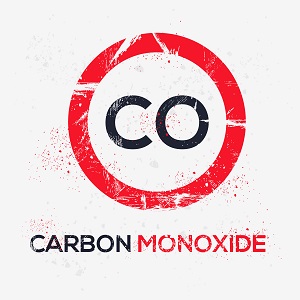Carbon monoxide is a deadly, invisible gas that can accumulate quickly and without warning, making awareness and prevention essential for keeping workers safe.

What is Carbon Monoxide?
Carbon monoxide (CO) is a poisonous gas that is colorless, odorless, and tasteless. CO can be found in construction areas where workers may be burning common materials such as wood, coal, or oil and using fuels such as gasoline or kerosene.
OSHA Standard 1926.57(a) Whenever hazardous substances such as dusts, fumes, mists, vapors, or gases exist or are produced in the course of construction work, their concentrations shall not exceed [hazardous] limits…
Carbon Monoxide Dangers
If you have any chance of carbon monoxide build-up at your jobsite then a safety meeting on Carbon Monoxide hazards is an absolute must. Do NOT assume that everyone has enough common sense not to do something stupid that will put them in a situation that could be deadly. Instead, have the safety meeting, so the employer can be assured that everyone has gotten the message and knows how to act responsibly so this is never an issue on your jobsite.
Carbon monoxide is a toxic gas because is damages the blood ability to carry oxygen throughout the body. CO is non-irritating and can overcome a worker without warning.
Workers may not realize they are being exposed to a high level of CO in the air they are breathing.
Carbon Monoxide Poisoning Symptoms
All crew members should be instructed to leave the area and report to their supervisors immediately if they feel dizzy, drowsy, or are experiencing nausea.
Early symptoms of carbon monoxide poisoning can mimic the flu like dizziness, weakness, headache, nausea, confusion, chest pain, visual difficulty and then loss of consciousness.
Severe carbon monoxide poisoning causes brain damage, severe illness, coma and death.
Symptoms of CO poisoning vary widely from person to person and CO poisoning can be reversed if caught early enough.
According to OSHA, "Many people die from CO poisoning, usually while using gasoline powered tools and generators in buildings or semi-enclosed spaces without adequate ventilation."
OSHA Permissible Exposure Limits for Carbon Monoxide The OSHA PEL is 50 parts per million (ppm). OSHA standards prohibit worker exposure to more than 50 parts of the gas per million parts of air averaged during an 8-hour time period.

Lead a Safety Meeting on Carbon Monoxide
Some important points to emphasize during a safety meeting on Carbon Monoxide hazards include:
- Follow all instructions and warnings for gasoline, diesel, and kerosene powered equipment and tools. Maintain equipment and tools that can produce CO in good working condition to reduce CO formation.
- Use tools powered by electricity or compressed air in enclosed areas whenever possible.
- Open windows and doors in enclosed spaces to avoid CO buildup.
- Report any situation where there may be a chance of CO accumulation.
- Equipment such as gasoline powered forklifts or even propane radiant heaters used indoors can also be a source of CO.
- Even working outdoors with gas powered equipment such as leaf-blowers, powered trowels, and similar tools could expose you to CO dangers after a prolonged use.
Safety meetings are important and every company, no matter what your industry, should be putting high-quality safety material in front of their employees on a weekly or monthly basis. Having a quick, weekly safety meeting ensures that everyone is paying attention. Toolbox talks or tailgate safety meetings don't need to last 30 minutes or an hour. You can get the important points across in a short, targeted 5-10 minute safety meeting and get everyone back to work quickly.
.jpg)

